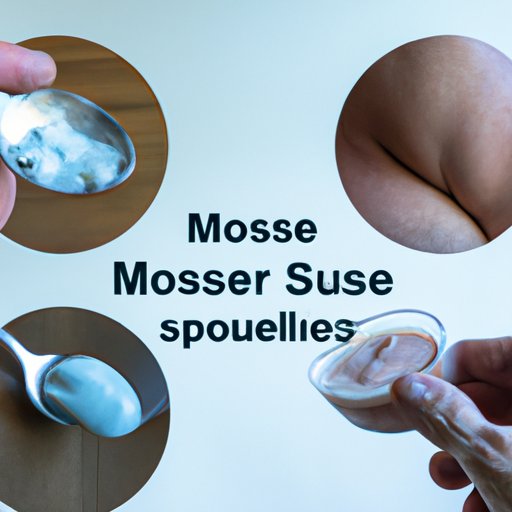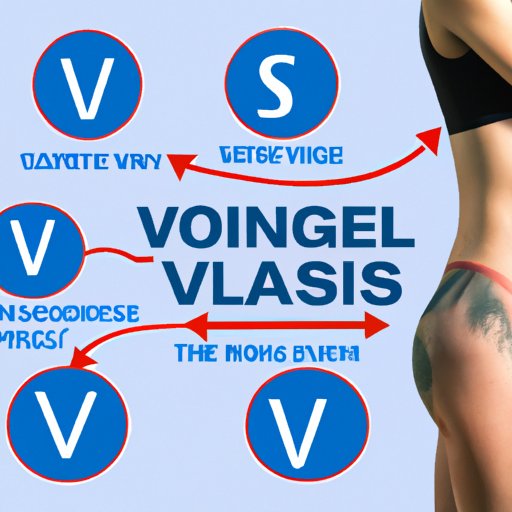
I. Introduction
Muscle soreness is a common problem that affects people of all ages and fitness levels. Whether you’re a professional athlete or a weekend warrior, you’ve likely experienced the discomfort of sore muscles after a workout or physical activity. In this article, we’ll explore the science behind muscle soreness and provide readers with effective ways to get rid of muscle soreness.
II. The Science Behind Muscle Soreness
Muscle soreness, also known as delayed onset muscle soreness (DOMS), is the discomfort or pain that is felt in the muscles after a physical activity. It usually peaks 24-72 hours after exercise and can last for up to a week. The main cause of sore muscles is an increase in physical activity that the muscles are not used to. This can lead to microscopic damage to the muscle fibers, resulting in inflammation and pain.
To prevent further damage and promote muscle recovery, it’s important to take care of your muscles. This means taking the necessary steps to reduce inflammation and promote healing.
III. Home Remedies for Treating Sore Muscles
One of the most effective ways to get rid of sore muscles is through home remedies. Here are some methods that you can try:
Massage
A massage is a great way to relieve muscle soreness and tension. You can either get a professional massage or give yourself a massage using a foam roller or tennis ball. When massaging sore muscles, make sure to apply gentle pressure and avoid pressing too hard or hurting the affected area.
Hot and Cold Therapy
Applying heat or cold to the sore muscles can help alleviate pain and inflammation. Use a hot compress or take a warm bath to relax sore muscles. To reduce inflammation, use a cold compress or ice pack wrapped in a towel and apply it to the affected area for 10-15 minutes.
Stretching
Gentle stretching is an effective way to relieve muscle tension and soreness. Some effective stretches include the hamstring stretch, the butterfly stretch, and the quad stretch. Make sure to hold each stretch for 30 seconds and avoid overstretching.
IV. The Role of Nutrition in Reducing Muscle Soreness
A balanced diet and proper hydration are essential for muscle recovery. Here are some tips for promoting muscle recovery through diet:
Proper Hydration
Drinking plenty of water is essential for muscle recovery. When your muscles are dehydrated, they are more susceptible to injury and inflammation. Aim to drink at least 8-10 glasses of water per day to stay hydrated.
Foods that Help Inflammation and Muscle Recovery
There are certain foods that can help reduce inflammation and promote muscle recovery. Foods that are high in omega-3 fatty acids, such as fish and nuts, can help reduce inflammation in the muscles. Vitamin C-rich foods, such as citrus fruits and leafy greens, can also help promote muscle recovery.
Supplements
Supplements can also be effective in reducing muscle soreness. Some popular supplements for muscle recovery include protein powders, BCAAs, and creatine. However, it’s important to consult with a healthcare professional before taking any supplements.

V. Methods for Reducing Muscle Soreness After Exercise
Whether you’re a runner, weightlifter, or yogi, there are specific techniques you can use to reduce muscle soreness after exercise. Here are some methods you can try:
Foam Rolling
Foam rolling is a self-massage technique that involves using a foam roller to massage sore muscles. This technique helps to release muscle tension and increase blood flow to the affected area.
Yoga
Yoga is a great way to stretch and reduce muscle tension. Practicing yoga regularly can help prevent muscle soreness and promote overall muscle health.
Other Techniques
Other techniques for reducing muscle soreness include acupuncture, sauna, and massage therapy. These techniques can be effective in relieving muscle tension and promoting muscle recovery.
VI. Expert Advice on How to Manage Muscle Soreness
Here are some tips from fitness professionals on how to manage muscle soreness:
Rest and Recovery
Rest and recovery time are essential for muscle health. Make sure to take a break from physical activity to allow your muscles to properly recover and heal.
Preventing Sore Muscles
To prevent sore muscles, make sure to properly stretch before and after exercise. Staying properly hydrated and getting enough sleep can also help prevent muscle soreness.
Strategies for Preventing Sore Muscles
Strategies for preventing sore muscles after intense workouts or long periods of sitting include using proper posture and taking breaks to move around and stretch throughout the day.
VII. How to Avoid Muscle Soreness Altogether
The best way to avoid muscle soreness is to take preventative measures. Here are some tips:
Stretching
Proper stretching before and after exercise can help prevent muscle soreness and injury.
Hydration
Staying well-hydrated can help prevent muscle soreness and promote overall muscle health.
Sleep Habits
Getting enough sleep is important for muscle recovery and reducing muscle soreness. Make sure to get at least 7-8 hours of sleep per night.
VIII. Conclusion
Muscle soreness is a common problem, but there are many effective ways to alleviate the discomfort. Home remedies such as massage and hot and cold therapy can be effective, as can nutrition and exercise-based techniques such as yoga or foam rolling. By taking care of your muscles and incorporating these techniques into your daily routine, you can reduce soreness and promote overall muscle health.
So don’t let muscle soreness keep you from achieving your fitness goals.





